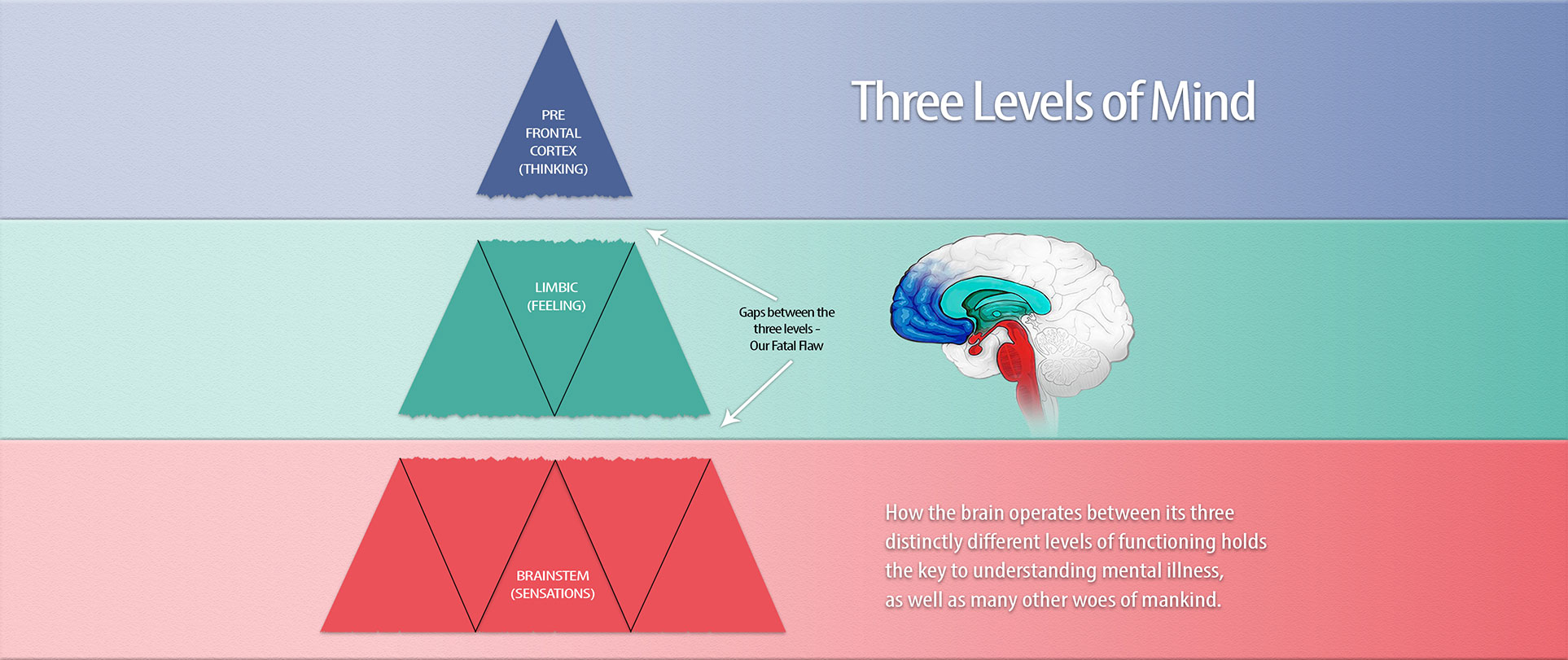Janovian primal therapy (JPT) was the therapy process that opened up my mind to the three levels of consciousness. There are many different types of psychotherapy being practised around the world today, but Janovian primal therapy is different to most others in that it requires the patient to be ‘in’ the reliving, rather than outside looking in. This difference is the difference between eventual cure, or just letting off pressure that is quick to rebuild.
This knowledge is difficult to describe to people, and is a huge stumbling block in understanding the benefits of JPT, and why most psychotherapies struggle to obtain good outcomes. I have recently read some of the philosophy of Alan Watts, and coincidently he describes this phenomenon quite well.
Watts argues that as long as we divide life into interior self awareness and exterior experience, into life in here and life out there, we split our psyche’s asunder and doom ourselves to never allowing the wholeness at the heart of human happiness. To know reality you cannot stand outside it and define it, you must enter into it, be it, and feel it.
He adds that there is a world of difference between an inference and a feeling. You can reason that the universe is a unity without feeling it to be so. You can establish the theory that your body is a movement in an unbroken process which includes all suns and stars, and yet continue to feel separate and lonely. For the feeling will not correspond to the theory until you have discovered the unity of inner experience. Despite all theories you will feel that you are isolated from life so long as you are divided within.
Watts also argues that the impulse for description over experience ( which can also translate as thinking over feeling), is symptomatic of the divided mind – the mind that robs us of inner wholeness. But the undivided mind is free from the tension of always trying to stand outside oneself and to be elsewhere than here and now. Each moment is lived completely and there is thus a sense of fulfilment and completeness.
After undergoing JPT I understand what Watts is trying to explain. Loneliness and fear were two especially awful and persistent feelings that arose during my therapy. It takes courage and prodding by a therapist to enter fully into these feelings. When I was able to do so I became fear itself, and the same for loneliness. I stopped being ‘out there’ (the safe place) and stepped ‘in here’ (the awful place).
After I cleared my mind of most of the awful inside stuff, I found that the brain works the same way in all feelings. Being able to now step inside love, beauty and peace is a tremendous experience. These feelings were somewhat illusive at the beginning of therapy, but as the awful painful feelings left my psych, I got to experience the good ones more frequently and at greater depth.
The philosophy of Alan Watts ties in nicely with primal theory and the aim of primal therapy in that it brings together the different levels of the divided mind into an undivided mind. When we suffer from lack of love early in life we have to keep our thinking and feeling minds separated, because the pain of connection is too great. Feeling that pain in small doses, by going ‘inside’ it, eventually leads to a connection with the love that is within every human being.
It is my assertion that if the human species does not connect to the inner self, we will continue to kill each other, live lives of ever increasing misery, and maybe even cause our species extinction. The divided mind at an individual level is the cause of so much division within the human species itself.
